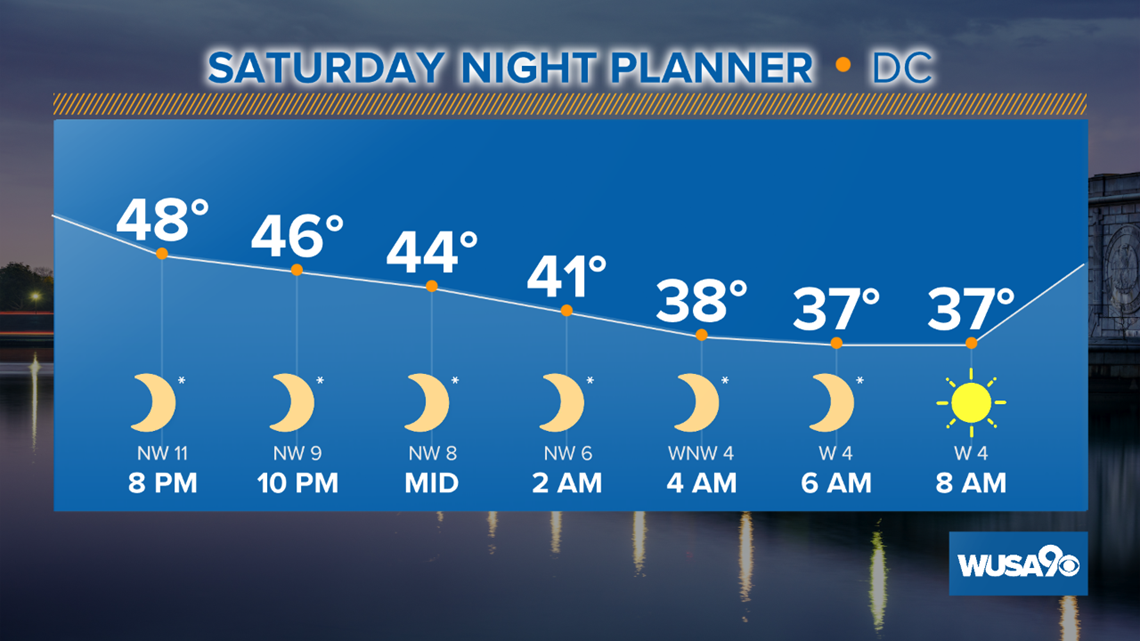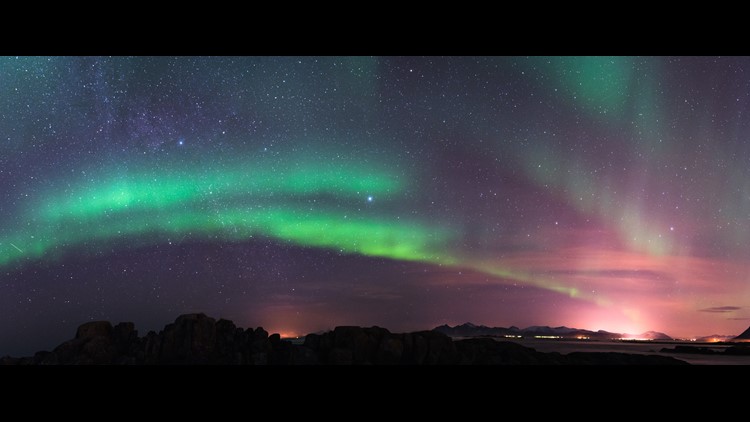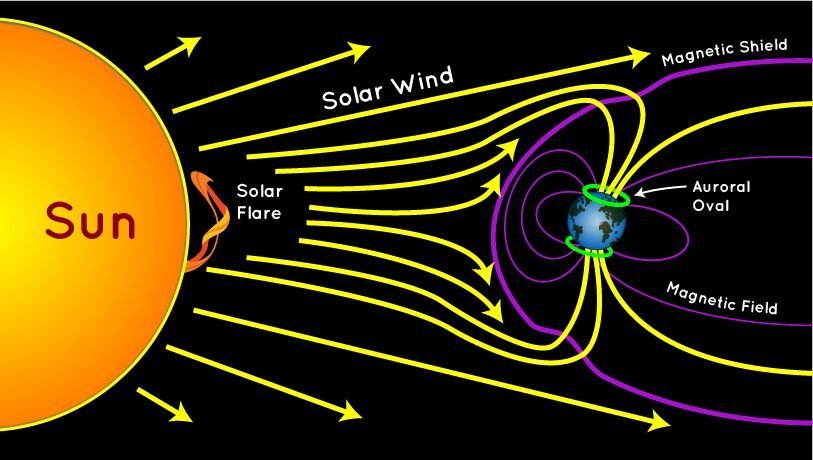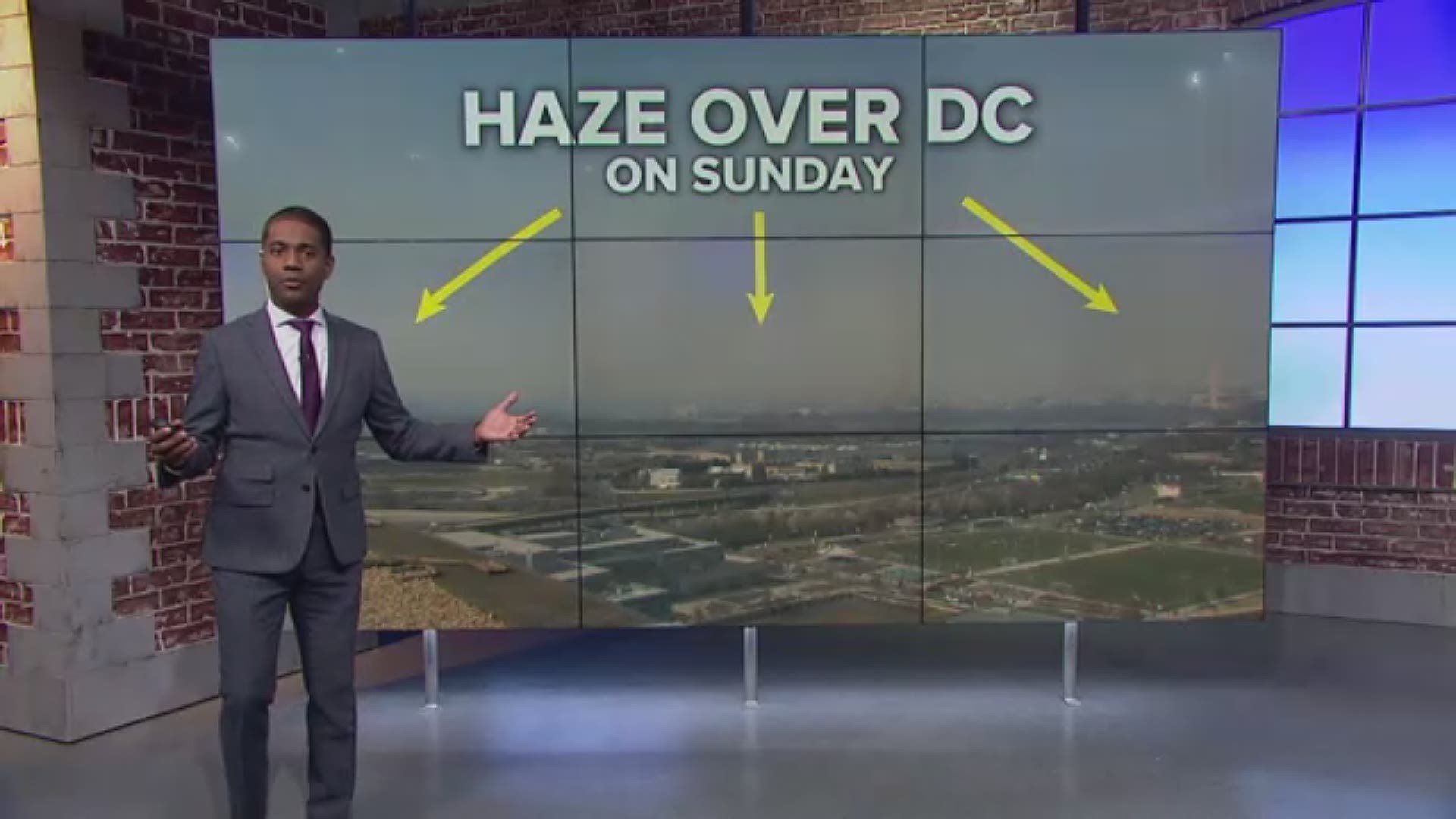WASHINGTON — A Coronal Mass Ejection and C4 Class Solar Flare occurred Wednesday, March 20th that may result in a display of the northern lights here on earth Saturday night, March 23rd.
NOAA's Space Weather Prediction Center has issued a G2 Moderate Geomagnetic Storm Watch for Saturday night.
Where might the northern lights be visible?
NOAA's Space Weather Prediction Center predicts a Kp index of 6 for the event, based on a scale of 1 to 9. The higher the number, the greater the likelihood of a Geomagnetic storm to occur.
The northern lights may vividly display as far south as New York to Wisconsin. On the graphic below, the southern extent of the northern lights is about where the yellow line is.


This is a frequently updated Aurora Forecast from NOAA's Space Weather Prediction Center.
App users click here to see the Aurora forecast

Here's How To Try And View The Aurora
The odds of seeing the aurora are slim in Maryland, D.C. and northern Virginia. If you want to try to catch a glimpse, you'll need to get far away from city lights and also far away from trees and buildings. You'll want to look at the bottom of the horizon northward. Tonight's forecast calls for clear skies, but the moon is still about 90% full after Wednesday's full moon... which will also add to obscure any possible views.


What Are Coronal Mass Ejections & Solar Flares?
Both solar flares and coronal mass ejections are explosions of energy within the sun's magnetic field.
A solar flare is a smaller, localized explosion that leashes energy and energized particles and accelerates it away from the sun, and sometimes towards the earth. In stronger solar flares, radio blackouts can occur.
A Coronal Mass Ejection, or CME, is a larger explosion of energized particles known as plasma. Like a cannon or t-shirt gun at a sports game, it hurls charged particles at more than a million miles per hour in one direction. The plasma of charged particles can react with oxygen and nitrogen in earth’s outer atmosphere, creating Aurora Borealis, known as the northern lights (or southern lights in the southern hemisphere). Stronger CMEs can also interrupt earth’s radio waves, GPS coordinates can be thrown off, and they can even impact earth’s electrical systems if utility companies aren’t prepared.
The most powerful solar storm in recent history was in October 2003. The northern lights were visible as far south as Florida!




